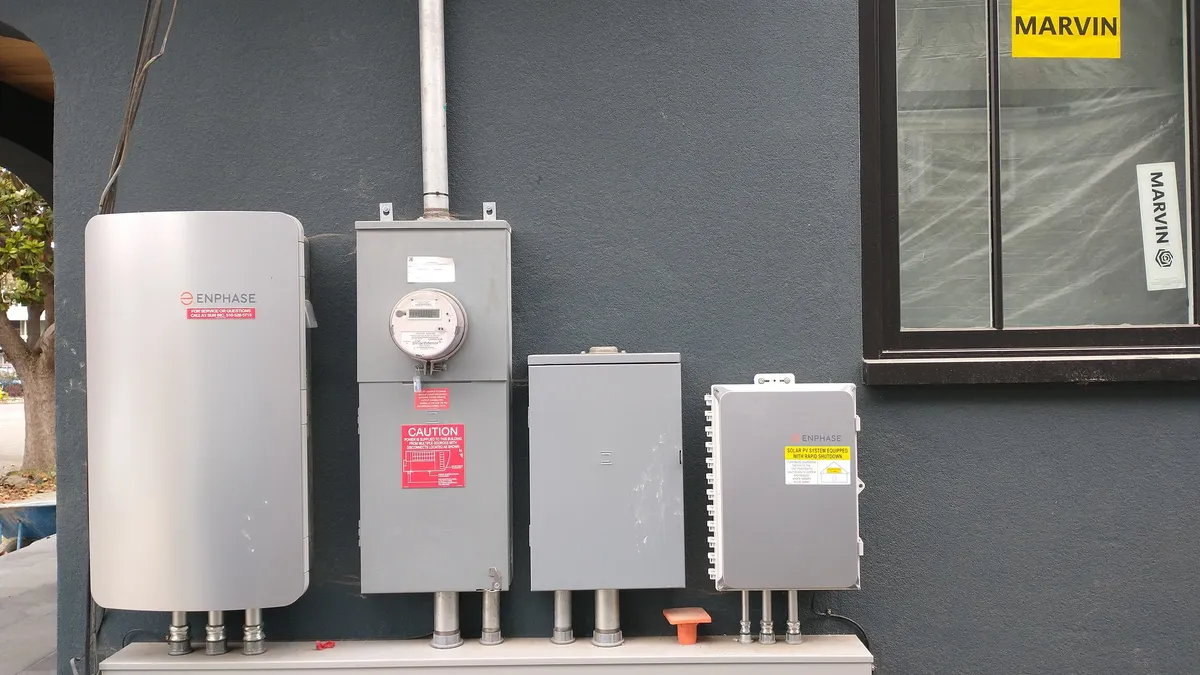This is the third in a six-part series on utility business model reform provided by Rocky Mountain Institute, America's Power Plan and Advanced Energy Economy Institute.
Incentives under the traditional cost-of-service utility revenue model are fundamentally misaligned with the implementation of energy efficiency programs. This is because, traditionally, utilities collect revenues based on the amount of energy they sell, whereas energy efficiency programs attempt to reduce energy consumption, thereby reducing utility revenues and profits.
This traditional structure disincentivizes utilities from delivering robust energy efficiency programs, limiting the use of a proven least-cost resource that also reduces peak demand and lowers consumer energy bills. Oklahoma demonstrates two ways to help utilities embrace energy efficiency programs — and ultimately make themselves and their customers better off financially.
Today, each utility under rate regulation in Oklahoma is eligible to recover lost revenue from energy efficiency programs through two vehicles: a Lost Revenue Adjustment Mechanism (LRAM) and a performance incentive based on energy savings shared with customers. These policies have led to significant improvements in annual energy savings and peak demand reduction in Oklahoma over the past decade.
Energy efficiency vehicles
The LRAM is a policy lever that allows the utility to recover revenues that are reduced specifically from energy efficiency programs. In Oklahoma, lost revenues are recovered annually and calculated by energy savings recorded in the utility's annual report multiplied by a cost factor set in its most recent rate case.
The shared savings incentive allows the utility to retain a portion of the net benefits of its energy efficiency program, up to 15%, if the utility meets certain performance metrics. Specifically, the incentive is a function of utility performance in two categories: total net benefits of the program and total energy savings. To be eligible for shared savings, a utility must achieve at least 80% of its energy savings goals and its portfolio of programs must meet certain industry-standard benefit-cost thresholds — Total Resource Cost Test ratio greater than 1 and Utility Cost Test ratio greater than 1.2.
These policies did not materialize from a legislative mandate but instead from a series of collaborative stakeholder meetings following a 2006 rate case proposal from Public Service Co. of Oklahoma (PSO) to build a new coal power plant to meet capacity needs. That proposal led the Oklahoma Corporation Commission (OCC) to initiate collaborative meetings where participants, including Oklahoma Gas & Electric (OG&E) and energy efficiency advocates, hammered out rough guidelines to implement energy efficiency programs as a cost-effective alternative for meeting growing energy needs.
As a result, the OCC issued an order in October 2007 requiring OG&E and PSO — Oklahoma's two largest utilities — and subsequently all electric utilities under rate regulation of the OCC, to propose and implement a portfolio of energy efficiency and demand response programs at least once every three years. In the order, the OCC stated that it is the responsibility of utilities to operate their systems in a manner that minimizes long-term cost to customers. Because "energy efficiency is cleaner and almost always cheaper than traditional supply-side resources" and it has the "potential to defer or avoid the construction of new power plants," the OCC found that the pursuit of energy efficiency is in the public interest.
These mechanisms have led OG&E and PSO to achieve significant energy savings and reduce peak demand by over 500 MW since 2008 without undermining their financial performance.
In addition, moving into the role of energy advisors and offering programs to save customers money has led to improved customer relations for Oklahoma utilities.
Unfulfilled promise
That said, Oklahoma's programs have still not fulfilled their full promise. Based on analysis from the Electric Power Research Institute, Oklahoma's utilities are only achieving 20% of their energy efficiency potential. High benefit-cost ratios for most individual programs as well as overall demand-management portfolios suggest that substantial cost-effective energy efficiency is being left on the table.
In addition, large customers are largely left out of the utility energy-saving effort. Fully 90% of this customer class, representing about one-third of total load, is allowed to opt-out of energy efficiency programs — neither contributing to nor benefiting from them — which reduces the overall program budget, increases costs for participating customers and deprives programs of major candidates for efficiency upgrades. In other leading energy efficiency states that do not have similar opt-out provisions, large commercial and industrial customers typically represent the biggest beneficiaries of utility energy efficiency offerings and the biggest sources of total energy savings.
A next step to drive greater energy efficiency savings would be for the state to adopt a formal revenue decoupling mechanism. This would help to resolve festering disputes over the implementation of the LRAM, better unlink utility revenues and sales volume, and further reduce utilities' interest in higher energy sales.
The OCC should also consider establishing an energy efficiency resource standard to provide greater market certainty for energy efficiency providers and help to achieve even greater energy savings. What Oklahoma has shown already, however, is that a few tweaks to the traditional way of doing business can put utilities in the business of pursuing energy efficiency and saving customers money, not just selling them more power.
Coley Girouard is a Principal at national business group Advanced Energy Economy.
The full case study, "Oklahoma's Energy Efficiency Incentives — Shared Savings-Based Performance Incentive Mechanisms," as well as four others, are available for download. This series is published concurrently with "Navigating Utility Business Model Reform," which provides a menu of options for pursuing reform at the state level.






















